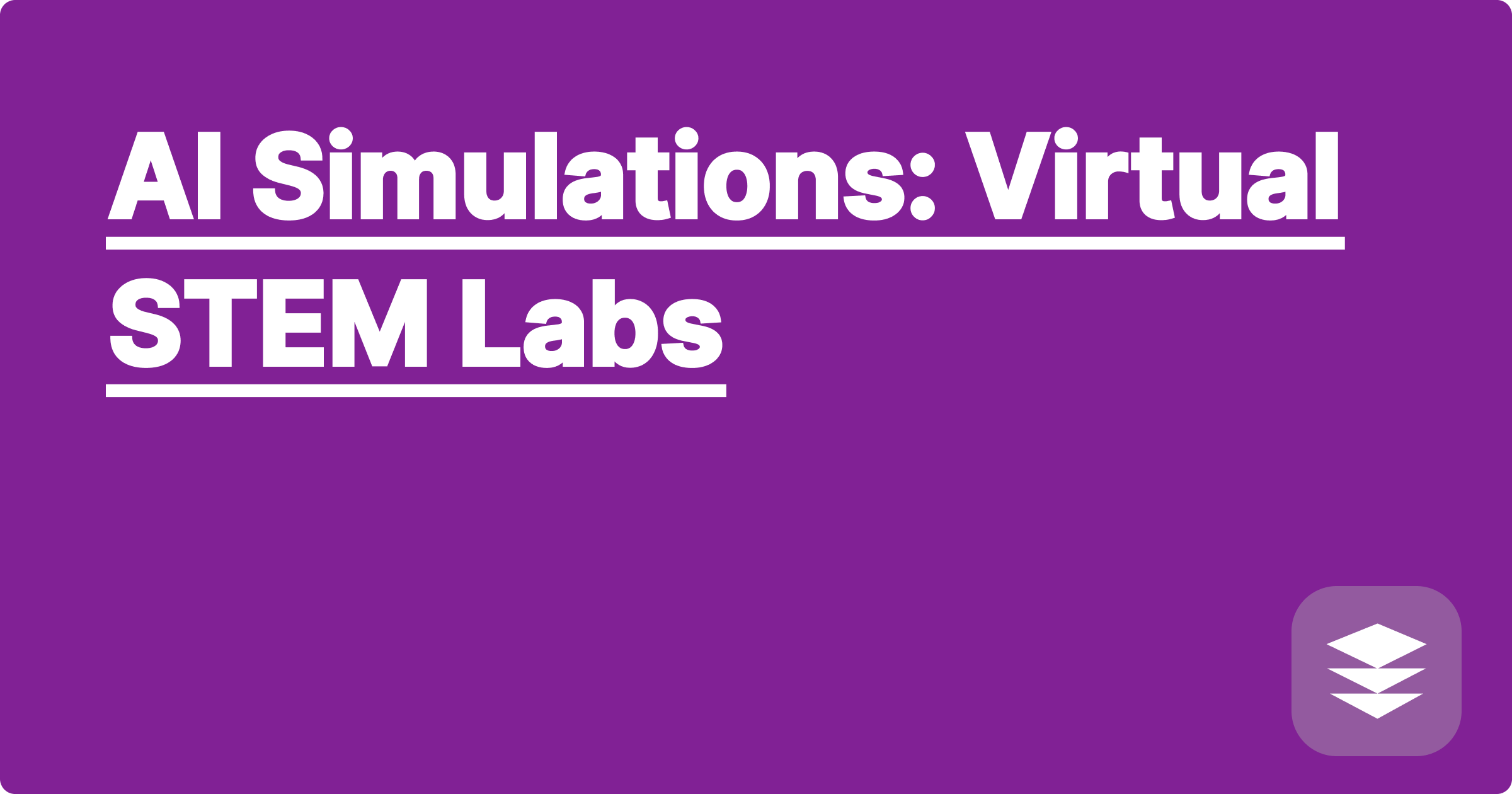
The world of STEM is exciting, demanding, and constantly evolving. Staying ahead of the curve requires not just hard work, but also smart work. Imagine tackling complex research projects with personalized assistance, optimizing your study time with intelligent guidance, and even having a virtual AI partner to bounce ideas off of. This is no longer a futuristic fantasy; it's the reality of AI-powered learning and research. This blog post delves into how AI simulations and virtual STEM labs are revolutionizing the way we learn, research, and innovate, focusing on lesser-known tools and personalized strategies to give you a real competitive edge.
For STEM students and researchers, time is a precious commodity. Juggling coursework, research projects, lab work, and personal commitments can feel overwhelming. This is where the power of AI comes into play. By leveraging the right AI tools, you can not only streamline your workflow but also gain deeper insights and accelerate your progress. This post will explore practical examples, real-world applications, and actionable tips to help you harness the full potential of AI in your STEM journey, ultimately saving you time, boosting your productivity, and maximizing your academic success.
STEM fields are inherently complex, requiring a deep understanding of fundamental concepts and the ability to apply them to solve intricate problems. Traditional learning methods often struggle to cater to individual learning styles and paces, leaving many students feeling lost or overwhelmed. Research, too, can be a daunting process, involving extensive literature reviews, data analysis, and experimental design. The sheer volume of information and the need for meticulous precision can make research a time-consuming and challenging endeavor. Furthermore, access to physical labs and equipment can be limited, especially for students in remote areas or those facing financial constraints. This limited access can hinder hands-on learning and experimentation, which are crucial for developing a deep understanding of STEM concepts.
AI offers a powerful solution to these challenges by providing personalized learning experiences and virtual lab environments. Imagine having a personalized AI tutor, a Generalized Personal AI (GPAI), that understands your learning style, identifies your strengths and weaknesses, and tailors its instruction accordingly. GPAI can help you create personalized study plans, provide targeted feedback on your assignments, and even generate practice quizzes to test your understanding. Beyond personalized learning, AI is transforming the way we conduct research. Tools like Semantic Scholar can help you navigate the vast landscape of scientific literature, identifying relevant papers and summarizing key findings. For data analysis, specialized AI tools like Deepnote (for coding and data science) or Biorender (for creating scientific figures) can automate tedious tasks, allowing you to focus on interpreting results and drawing meaningful conclusions.
Integrating AI into your STEM workflow doesn't have to be complicated. Start by identifying your biggest pain points. Are you struggling with time management? Do you find it difficult to keep up with the reading material? Or are you spending too much time on repetitive tasks in your research? Once you've identified your challenges, you can start exploring AI tools that address those specific needs. For example, if you're struggling with time management, GPAI can help you create a personalized study schedule and prioritize tasks based on deadlines and importance. If you're overwhelmed by the volume of research papers, Semantic Scholar can help you filter and summarize relevant literature. And if you're spending too much time on data analysis, tools like Tableau (for data visualization) can automate data cleaning and visualization, freeing up your time for more strategic tasks.
Consider a student struggling with calculus. They can use Wolfram Alpha not just to get the answer to a specific problem, but also to understand the step-by-step solution and the underlying concepts. This provides a much deeper understanding than simply memorizing formulas. In research, imagine a biologist studying protein folding. They can use AI-powered simulation software like Folding@home to predict protein structures and test different hypotheses, accelerating the research process and leading to faster discoveries. Another example is a chemistry student using a virtual lab simulation to conduct experiments that would be too dangerous or expensive to perform in a physical lab. These virtual labs provide a safe and cost-effective way to gain hands-on experience and reinforce theoretical knowledge.
To truly maximize the benefits of AI, it's essential to adopt a strategic approach. Don't just rely on popular tools like ChatGPT; explore niche AI tools that are specifically designed for your field of study. For example, mathematicians can leverage Mathpix Snip to digitize and solve complex equations, while physicists might use COMSOL Multiphysics for simulations. Experiment with different tools and find the ones that best fit your learning style and research needs. Remember that AI is a tool, not a replacement for human intellect. Use it to augment your abilities, not to replace them. Critically evaluate the output of AI tools and always double-check the results. Finally, stay updated on the latest advancements in AI and continuously explore new tools and techniques to stay ahead of the curve.
In conclusion, AI is transforming the landscape of STEM education and research. By embracing AI-powered tools and strategies, you can unlock your full potential, achieve academic excellence, and contribute to groundbreaking discoveries. Start by identifying your specific challenges and exploring the vast array of AI tools available. Experiment, adapt, and integrate AI into your workflow to optimize your learning and research journey. Don't wait for the future to arrive; the future of STEM is here, and it's powered by AI. Take the first step today and experience the transformative power of AI in your STEM endeavors.
AI for Labs: Speed Up Research
AI Homework Helper: STEM Made Easy
AI Design Tools: Engineering Made Fun
AI Solver: Conquer STEM Problems
AI Flashcards: Master STEM Concepts
AI for Data: Analyze STEM Data